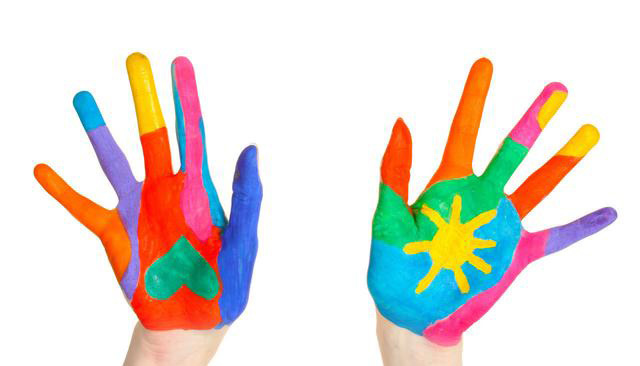
Long press QR code to follow, Customize your exclusive packaging
How to solve the problem of color ink dropping from packaging bags
In the packaging industry, workers commonly use 3M tape to test ink adhesion. The test tape is firmly attached to the test area, covering the entire area. One end of the tape is grasped by hand and quickly peeled off. When the area is too large, the covered area must be no less than 15 square centimeters. Repeat the process in the same location and check for ink detachment. Ink detachment area not exceeding 10% of the test area is considered normal.
In the packaging bag industry, workers generally use 3M tape to test ink adhesion. Attach the test tape firmly to the test area, covering the entire area. Grab one end of the tape and quickly tear it off. If the area is too large, the covered area must be no less than 15 square centimeters. Repeat once in the same location and check for ink shedding. The ink shedding area should not exceed 10% of the test area; this is considered within the normal range.

Poor ink adhesion is a major problem in the printing process of colorful packaging bags. Today, Shunxingyuan Packaging, a professional flexible packaging manufacturer, will explain how to solve the problem of ink dropping during production.
I. Common Ink Dropping Situations in Colorful Packaging Bags

1, UV Poor Ink Curing
In actual printing production, it is often encountered that after UV ink is irradiated by ultraviolet light, the surface of the ink is cured, but the inside is not completely cured. The uncured UV ink has a weak binding force with the film material and is easily torn from the material surface during the tape test.
2, PE/PP Insufficient Surface Tension of Film Material
Before printing, workers should use a dyne pen or dyne liquid to check the surface tension of the film material. To ensure good UV ink adhesion, the surface tension of the film material must be at least 42 dynes / per square centimeter. If the surface tension of the film material does not meet the requirements before printing, it will cause poor ink adhesion.
The principle of corona treatment is that the film passes between two electrodes with high voltage. The high voltage ionizes the air between the electrodes, generating an electron flow between the electrodes. The electrons create microscopic pits invisible to the naked eye on the film surface, making the film surface polar and facilitating ink adsorption.
The surface polarity (i.e., surface tension) of the film can be tested with dyne liquid. Generally, the surface tension of a film that has just undergone corona treatment should reach more than 40 dynes. After the film is placed for a week, it must also reach 38 dynes or more. Films below 36 dynes do not have sufficient ink adhesion.
Generally speaking, it is best to use the film within one week of extrusion. If it needs to be stored for a long time, it must be stored in a dry, cool, and ventilated warehouse, and the storage time should not exceed 3 months. Films stored for a long time must be tested with dyne liquid before use, and only after passing the test can they be used; otherwise, losses may occur.
3. Mismatched Ink
For some film materials (such as PET, BOPP ), in order to enhance the printability of the material, the material supplier will apply a coating to the surface. Different inks use different resins, so even when printed on the same coating layer, they often show different results.
II. Two Methods for Solving Ink Dropping from Colorful Packaging Bags

1. Thumb Pressing Method to Determine Ink Curing
Press your thumb firmly on the ink surface and press back and forth several times. If ink appears on your thumb, it can be determined that the ink is not completely cured. There are many reasons why the ink is not completely cured, it may be a problem with the ink itself, or it may be a problem with the UV curing system.
Here are some key points to note: If UV ink is not used up, be sure to cover it; during storage, pay attention to avoiding light; the storage temperature should be around 20 ℃, and the temperature should not be too high; UV The lamp's service life is generally around 1000 hours. Once it exceeds its service life, its spectral curve will change, so we should correctly record UV the lamp's usage time and replace it in time.
2. Improve the Surface Tension of the Film Material
Some film materials, such as PE film, do not have ideal ink adhesion and require special surface treatment. By surface treatment to increase the surface tension of the film material to be greater than the surface tension of the ink, so that the ink and the film material can be correctly combined. Surface treatment usually includes corona treatment and surface coating treatment. Corona treatment uses high-voltage charges to discharge onto the surface of the film material, ultimately increasing the surface energy and surface tension; or surface coating treatment, applying a printing-friendly coating to the surface of the film material to change the surface properties of the film material, making it suitable for printing.
III. Printability of Different Plastic Films

Different plastic films have different surface properties, resulting in different degrees of ink adhesion. However, the printing effect is achieved through the reasonable adhesion of ink on the plastic film, so it is necessary to improve the printability of the plastic film surface. According to the arrangement of the surface molecular structure of different films, they can be divided into polar structure films and non-polar structure films. Among them, non-polar films need surface treatment.
Polyethylene film: PE film has poor ink adhesion and needs corona treatment to improve it. The wettability is often used to determine the quality of corona treatment. Generally, printing uses LDPE film in 38-42mN/m, HDPE film in 40-44 mN/m is optimal.
LDPE has poor mechanical strength, gas barrier properties, and oil resistance, but its moisture resistance, cold resistance, chemical stability, elongation, and impact resistance are relatively good. Because low-density polyethylene is a non-polar material, its surface tension is poor, and corona treatment must be performed before printing. Moreover, its softness is good, and its ductility is also large. The printing register accuracy must be ensured, and the tension must be controlled to prevent edge curling. To prevent ink sticking, the film must be cooled to 35 ℃ or below during winding.
HDPE film is milky white, translucent, and hard in texture. Its strength, hardness, solvent resistance, gas barrier, and moisture barrier properties are all better than LDPE superior, but its surface gloss is poor, and it is generally used for small commodity bags and garbage bags.
Polypropylene film: PP film's transparency, heat resistance, and printability are superior to PE film. However, ink adhesion is poor, and corona treatment is required before printing to improve it. Generally used for printing PP film's wetting tension is at 10-44 mN/m is optimal.
BOPP film is the most commonly used printing substrate, with good mechanical strength, airtightness, moisture barrier properties, and cold resistance. This film also has excellent transparency, but poor heat sealability and tear resistance. Its gloss is better than ink, and its production process key points are a typical plastic gravure — reverse printing production process, using polyamide or chlorinated polypropylene ink for printing, with appropriate tension and printing pressure, and drying temperature controlled below 80 ℃, resulting in vivid, bright, and beautiful colors after printing. To prevent ink contamination of products, it is often compounded with PE film lamination, so that the ink is sandwiched between the two films.
CPP film has good transparency, heat sealability, and thickness uniformity, but it is prone to stretching during printing, affecting color registration accuracy. Surface printing or reverse printing processes can be used, with polyamide ink or chlorinated polypropylene ink. It should be noted that when polyamide ink is used for printing PP film, the ink adhesion after printing is low, and generally, it takes one day of aging to exhibit good adhesion.
Polyester film (PET): PET is a film with excellent transparency and gloss, good heat resistance, and lower tension control than PE films, it is not easily dissolved, has good gas barrier properties and good odor barrier properties, so it is often used for printing retort pouches, usually with polyurethane ink; when heat resistance requirements are not high, polyamide ink is commonly used.
PET film has very good insulation properties and is prone to generating static electricity during printing, so static eliminators are required for high-speed printing; PET film drying temperature can be controlled higher, but its film surface temperature should not exceed 85 ℃. When winding, the film should be cooled to room temperature.
Polyvinyl chloride film (PVC): PVC film is divided into colored and colorless, it has good surface gloss, and ink adhesion is better than PE and PP films, generally no corona treatment is required before printing, but it is still needed when printing with water-based inks. According to the amount of plasticizer, it can be divided into soft, semi-soft, and rigid films.
PVC film uses surface printing or reverse printing processes, with vinyl chloride - vinyl acetate copolymer ink or polypropylene ink. It generally uses high-frequency heat sealing. If heat and part of it are conductive, it will break during high-frequency heat sealing, so attention must be paid to the insulation of the ink, especially black ink and gold and silver inks.
Soft PVC film contains a large amount of plasticizers. The precipitation of these plasticizers will enter the ink layer, causing failures such as discoloration, stickiness, and ink migration. Since plasticizer precipitation is a slow process, the selected ink must be appropriate, and rigid ink must not be chosen, rigid PVC ink. Soft PVC film is extremely easy to stretch, making color registration difficult. It is very prone to stretching when heated, so drying temperature must be lowered, tension controlled, and a large cylinder printing machine should be selected to ensure registration accuracy.
Nylon film (PA): Most of the nylon films used for printing in soft plastic packaging are biaxially oriented nylon films ( BOPA ), which is widely used for high-temperature retort foods, boiled foods, vacuum packaging, and other products due to its special properties such as softness and puncture resistance.
Biaxially oriented nylon film (BOPA) is a film that is extremely susceptible to moisture absorption and deformation. Therefore, during printing, it is essential to ensure that the humidity of the printing environment is not too high. To prevent the printed film from damaging its original aluminum film packaging, printing should be done immediately after opening. The nylon film needs to be preheated before printing, with a preheating temperature of 50-80 ℃. Printing tension should be appropriately reduced, printing should be moderate, and ink adaptability should be strong, chosen according to different product structures. If it is a retort pouch, retort ink must be selected. After printing, the product must be sealed and stored in a dry lamination curing room, and laminated as soon as possible.
Related Information
Proper use of food packaging bags
Nowadays, many food products are packaged in plastic bags, mainly for convenience and hygiene. However, for consumers, understanding the materials of food packaging bags is also a keyword. Below, Shunxingyuan Packaging, a professional flexible packaging manufacturer, will give you a detailed introduction to the material identification methods of food packaging bags.
What types of clothing packaging bags are there? What is their scope of application?
Generally speaking, clothing packaging bags are mainly made of PE, PO, PP and other materials, and are widely used in shirt, knitting, clothing, textile and other industries. They are mainly used to package clothes and display brand image products, so clothing packaging bags are also a good advertising platform.
What is a gusseted bag? What are the benefits of using gusseted bags?
With the continuous development of the times, people's consumption concepts are also constantly changing, and people's pursuit of quality of life is also constantly improving. Taking food as an example, the quality of food packaging bags directly affects consumers' desire to buy. A beautiful and exquisite food packaging bag can instantly improve the grade of the product itself and add value to the product. Below, Shunxingyuan Packaging, a professional flexible packaging manufacturer, will analyze what an eight-side sealed bag is and what are the advantages of an eight-side sealed bag?







